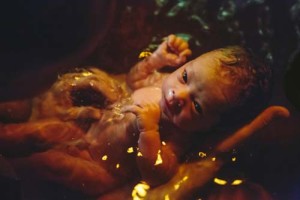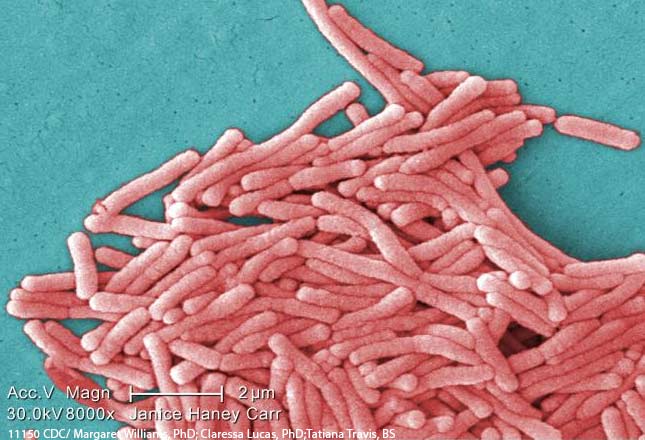The latest issue of the Centers for Disease Control and Prevention’s journal Emerging Infectious Diseases® highlights the legionellosis risk to newborns that water birthing pools pose.1

In January 2014, a newborn in Texas died after being birthed at home in a recreational water pool supplied by a certified midwifery center. At six days old, the infant was admitted to a pediatric hospital suffering from respiratory failure, loose feces, and cyanosis (a blueish discoloration of the skin caused by inadequate oxygen circulating in the blood). Because they knew the circumstances of the water birth, clinicians included testing for Legionella bacteria in their battery of diagnostic tests; on the fourth day of the baby’s hospitalization, the tests confirmed that it had contracted L. pneumophila serogroup 1. The child died fifteen days later.
Although Legionnaires’ disease (LD) typically is not contracted by healthy children, newborns are particularly susceptible to infection if Legionella pneumonia bacteria is present in their environment. As Elyse Fritschel, an epidemiologist with the Texas Department of State Health Services, explained following the infant’s death, “They are in a higher risk category because of their underdeveloped immune system, and their developing physiology.”2
And, although rare, water birth-associated infant deaths from LD have occurred frequently enough that researchers recommend against the practice. In 20013 and 20044 research studies by the Infectious Diseases Unit at the University of Turin, Italy’s Department of Pediatric Science, the authors describe how a 7-day-old newborn contracted LD from a hospital’s birth pool water contaminated by L. pneumophila serogroup 1.
A more recent investigation discusses how a neonate in England contracted the deadly illness during a home water birth in June 2014. The authors conclude that:
- “It is recommended that heated birthing pools should not be used for home births;” and
- “Neonates developing pneumonia within 14 days of labour or birth in any birthing pool should be tested for Legionnaires’ disease.”5
In the case of the Texas infant who died, investigators from the Texas Department of State Health Services (TDSHS) were unable to detect Legionella bacteria in the birthing tub because it had been cleaned, disinfected, and put away before they tested it. However, records showed that the tub, filled with unfiltered, untreated well water, had been maintained at 37°C – the perfect temperature for breeding this bacteria. Moreover, the pool was a recreational jetted tub not approved for use as medical equipment; its water was treated with a non-FDA-approved additive rather than chlorine. Finally, the midwifery center failed to provide written procedures for water births to either its clients or its personnel. The Emerging Infectious Diseases® researchers concluded, “Findings from this investigation revealed a gap in the standardization and implementation of infection control practices for midwives during home water births.”6
TDSHS has subsequently issued birth pool guidelines to midwifery organizations in Texas, has recommended that recreational tubs unable to be properly disinfected not be used, and as encouraged the use of standard written procedures.
What To Do If Your Newborn Contracts Neonatal Pneumonia

Almost all epidemiological studies of LD in infants suggest that LD is underdiagnosed within nosocomial (hospital) and home birth environments:
“As this rare infection may have a high fatality rate if unrecognized, pediatricians should be aware of the possibility of the legionellosis in newborns.
The number of cases is presumably underestimated most likely because Legionella is not considered as a causative agent of neonatal pneumonia. Pediatricians are not aware of the possibility of legionellosis and do not request special laboratory tests for Legionella.”7
If your newborn displays symptoms of severe pneumonia after either a) a home water birth or b) delivery within a hospital, it is vital that they be tested in order to rule out the possibility of LD, which requires different medical treatment than regular pneumonia. Swift and appropriate intervention – typically, treatment with erythromycin/clarithromycin, can be life-saving; a delay in accurate diagnosis, however, weakens the prognosis.
Legionnaires’ disease, especially within healthcare environments, is highly preventable, and thus healthcare providers are accountable for ensuring that their water systems and equipment are properly tested, monitored, and sanitized. If you or a loved one has contracted Legionnaires’ disease within a healthcare setting, our legal team can help you to define the course of action you should take to achieve the compensation to which you are entitled. For more information, please contact Eric Hageman at 1-888-377-8900 or use our free online consultation form. Let us help you sue for compensation and justice.
Sources:
- Fritschel E, Sanyal K, Threadgill H, Cervantes D. Fatal legionellosis after water birth, Texas, USA, 2014. Emerg Infect Dis [Internet]. 2015 Jan [date cited]. http://dx.doi.org/10.3201/eid2101.140846. DOI: 10.3201/eid2101.140846
- Gholipour, Bahar. “Baby infected in birthing pool died of LD.” CBS News citing article originally published on LiveScience. Web. 10 Dec. 2014.
- Franzin L, Scolfaro C, Cabodi D, Valera M, Tovo P.A. Legionella pneumophila Pneumonia in a Newborn after Water Birth: A New Mode of Transmission. Clin Infect Dis. (2001) 33(9):3103-e104. Web. 2015 Jan [date cited]. DOI: 10.1086/323023.
- Franzin L, Cabodi D, Scolfaro C, Gioannini P, Microbiological investigation of a nosocomial case of Legionella pneumophila pneumonia associated with water birth and review of neonatal cases (“Indagini microbiologiche su un caso di polmonite nosocomiale da Legionella pneumophila associata a parto in acqua e revisione dei casi neonatali”). Infez Med. (2004) Mar; 12(1):69-75. Web. 2015 Jan [date cited].
- Phin N, Cresswell T, Parry-Ford F. Case of LD in a neonate following a home birth in a heated birthing pool, England, June 2014. Euro Surveill. (2014) 24 July:19(29). pii: 20857. Web. 2015 Jan [date cited].
- Fritschel E, Sanyal K, Threadgill H, Cervantes D. Fatal legionellosis after water birth, Texas, USA, 2014. Emerg Infect Dis [Internet]. 2015 Jan [date cited]. http://dx.doi.org/10.3201/eid2101.140846. DOI: 10.3201/eid2101.140846
- Franzin L, Cabodi D, Scolfaro C, Gioannini P, Microbiological investigation of a nosocomial case of Legionella pneumophila pneumonia associated with water birth and review of neonatal cases (“Indagini microbiologiche su un caso di polmonite nosocomiale da Legionella pneumophila associata a parto in acqua e revisione dei casi neonatali”). Infez Med. (2004) Mar; 12(1):69-75. Web. 2015 Jan [date cited].
